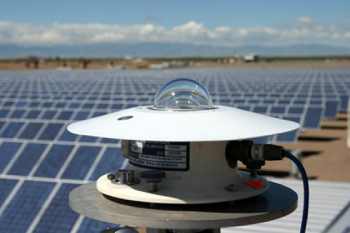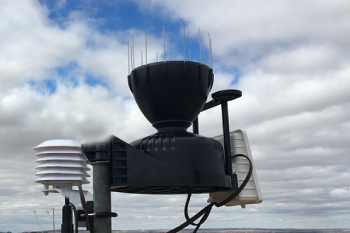In order to comprehend and monitor climate and weather, meteorological sensors are utilised. A combination of sensors called a weather station is used to measure atmospheric conditions in order to comprehend the local environment and weather. Most weather stations keep track of information on the following variables: temperature, humidity, solar radiation, barometric pressure, wind direction and speed, and rainfall.
Weather monitoring sensors are one of the key components of a solar power plant that collect various weather data. The key function of WMS function is to gather the data of weather parameters such as solar radiation, Module surface temperature, Ambient temperature, wind speed etc. at any solar pv site which helps to monitor the efficiency and performance of the power plant. Analysis of this data w.r.t the plant generation helps to analyze and improve the performance of the solar plant.

Solar Irradiation (Irradiance) sensor/ Pyranometer capture the intensity of sunlight (W/m2) incident on the panels. It helps to calculate the solar insolation incident on the solar panel for the entire day in KWH/m2
In-plane irradiance received by the PV array is one of the most important and significant factors that directly impacts the PV Performance. Irradiance must be measured accurately to determine the optimal PV performance ratio. This allows you to understand how well your system is performing compared to the ideal conditions.
Two types of radiation is generally monitored:
This sensor is designed to attach directly to any solar panel. When placed on the center back side of the panel, it accurately measures the temperature of the panel. The output of solar modules is dependent on temperature. If the module surface temperature rises beyond the specified limit mentioned, the efficiency of the panels will be reduced accordingly.
This sensor measures the output air temperature. The solar panels are designed to perform at the highest efficiency at certain degree of ambient temperature which is known as ideal conditions.
Wind speed and wind direction provides a critical parameter to consider from safety perspective of the plant. The heavy winds may cause damage to the solar PV system and hence should be observed regularly for any possible maintenance activities to be carried out.

Rainfall sensor provides the total rainfall and time of rain during the day which explain low energy yields during a specific period of time.
Logics PowerAMR provides real time and historical data analysis of all the weather sensors. PowerAMR is one of the top suppliers of weather sensors that ticks all the right boxes you are looking for.